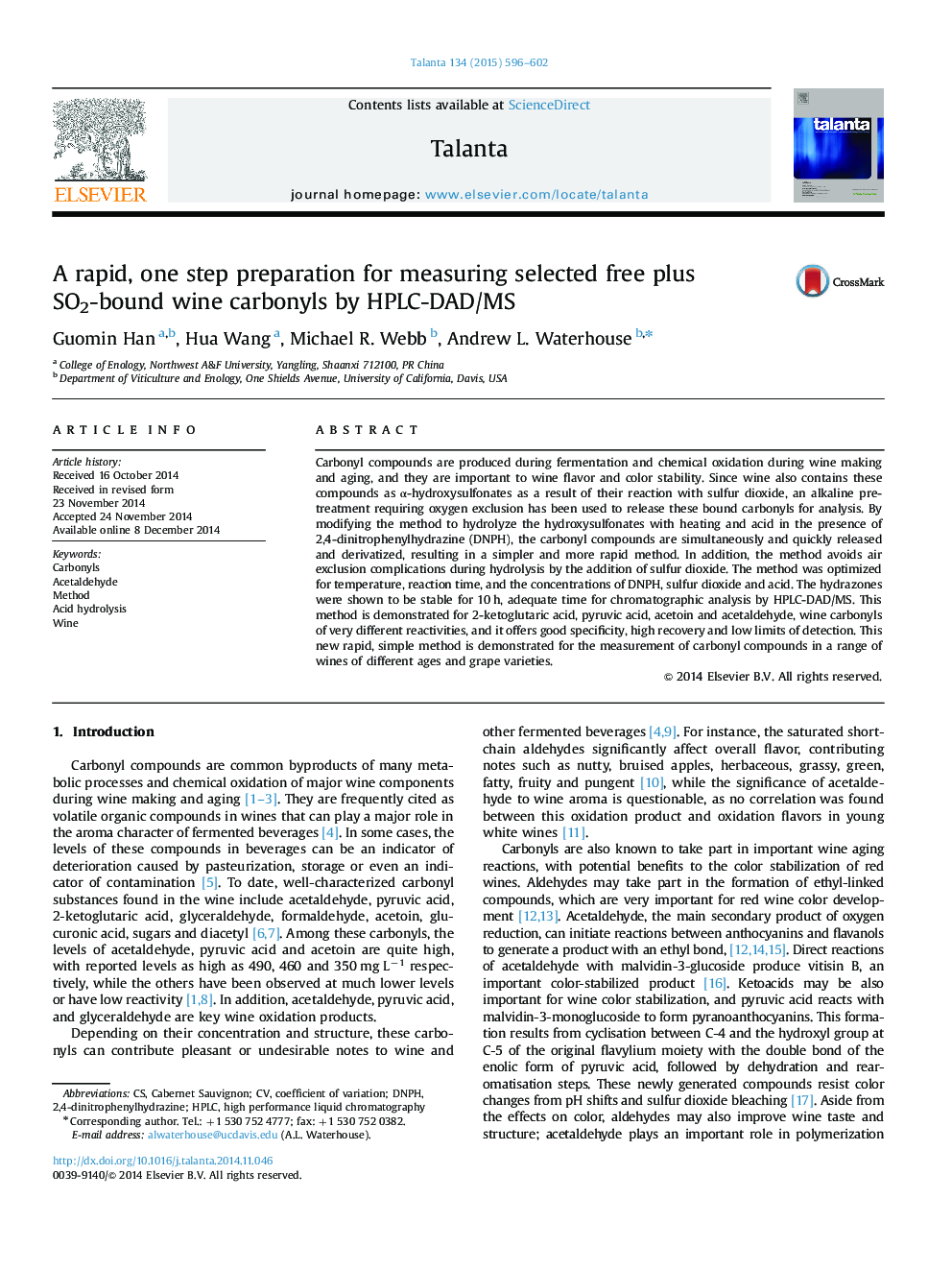| Article ID | Journal | Published Year | Pages | File Type |
|---|---|---|---|---|
| 1244123 | Talanta | 2015 | 7 Pages |
•SO2 bound carbonyls can be released with acid instead of base.•Acid treatment combines derivatization with DNPH, reducing complexity.•Heat treatment accelerates the process.•Multiple carbonyls are quantified as the hydrazones by HPLC.•This approach is a new, rapid and simpler method to quantify wine carbonyls.
Carbonyl compounds are produced during fermentation and chemical oxidation during wine making and aging, and they are important to wine flavor and color stability. Since wine also contains these compounds as α-hydroxysulfonates as a result of their reaction with sulfur dioxide, an alkaline pre-treatment requiring oxygen exclusion has been used to release these bound carbonyls for analysis. By modifying the method to hydrolyze the hydroxysulfonates with heating and acid in the presence of 2,4-dinitrophenylhydrazine (DNPH), the carbonyl compounds are simultaneously and quickly released and derivatized, resulting in a simpler and more rapid method. In addition, the method avoids air exclusion complications during hydrolysis by the addition of sulfur dioxide. The method was optimized for temperature, reaction time, and the concentrations of DNPH, sulfur dioxide and acid. The hydrazones were shown to be stable for 10 h, adequate time for chromatographic analysis by HPLC-DAD/MS. This method is demonstrated for 2-ketoglutaric acid, pyruvic acid, acetoin and acetaldehyde, wine carbonyls of very different reactivities, and it offers good specificity, high recovery and low limits of detection. This new rapid, simple method is demonstrated for the measurement of carbonyl compounds in a range of wines of different ages and grape varieties.
Graphical abstractFigure optionsDownload full-size imageDownload as PowerPoint slide
